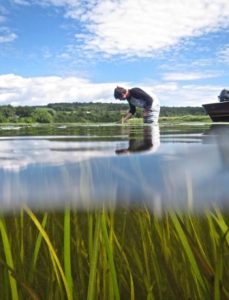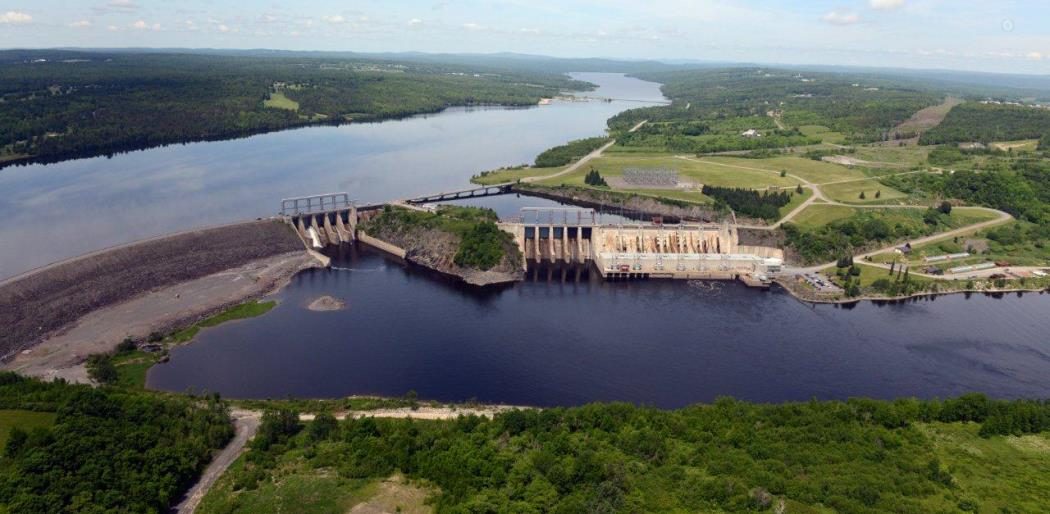There are tens of thousands of large hydro dams in North America, built in the 1940s and 50s, that are nearing the end of their service lives. Governments and power utilities are faced with big-cost decisions about what to do with these dams in the future.
Should they be rebuilt, refurbished, or decommissioned so the river returns to a natural state? No matter what the decision, it is a mammoth undertaking and usually contentious decision. Decision-makers must consider a wide range of potential economic, environmental, and social outcomes and impacts.
 “It’s an emerging field of study, dam renewal and removal,” said Dr. Allen Curry, science director at the Canadian Rivers Institute. Curry is the principal investigator of the Mactaquac Aquatic Ecosystem Study (MAES) on the iconic St. John River in New Brunswick. The study was commissioned by the provincial energy utility, NB Power, to inform the utility’s options for the Mactaquac Generating Station, a 672-megawatt run-of-the-river hydroelectric facility that was built in 1968 and is fast approaching the premature end of its service life.
“It’s an emerging field of study, dam renewal and removal,” said Dr. Allen Curry, science director at the Canadian Rivers Institute. Curry is the principal investigator of the Mactaquac Aquatic Ecosystem Study (MAES) on the iconic St. John River in New Brunswick. The study was commissioned by the provincial energy utility, NB Power, to inform the utility’s options for the Mactaquac Generating Station, a 672-megawatt run-of-the-river hydroelectric facility that was built in 1968 and is fast approaching the premature end of its service life.
NB Power engaged the scientists at Canadian Rivers Institute to design a large, multidisciplinary aquatic ecosystem study, making it the first comprehensive study of a large dam renewal or removal project at this scale in the world.
The Mactaquac Aquatic Ecosystem Study (MAES) is a multi-million dollar, multi-year research initiative on the Saint John River in New Brunswick (the second longest river on the north eastern seaboard), focused on creating a template of approaches and methods to incorporate aquatic ecosystem science into decision-making and management of large dam review and renewal projects worldwide.
Curry and his team at the University of New Brunswick in Fredericton, NB, Canada are developing a hub of scientific expertise that can provide energy utilities around the world with the methods, models, and scientific advice they need for infrastructure reviews and future environmental impact assessments.
The Canadian Rivers Institute (CRI), hosted at the University of New Brunswick, has 23 science directors at 15 university and institutions in Canada and abroad. It has become an international leader in multi-disciplinary aquatic science involving partners in academia, industry and government.
CRI’s work is advancing understanding of the health of fresh waters and estuaries and being used to inform policy and management decisions by governments and industry. CRI science directors have been awarded 10 Canada Research Chair programs to date.
CRI scientists are developing made-in-Canada tools, technologies and methods that are transferable to governments and power utilities around the world as tens of thousands of aging dam facilities are facing infrastructure renewals, and the demand for river restoration is growing explosively.
Photos courtesy of CRI.
See article by Anne Levesque & Gordon Yamaski in Water Canada.

